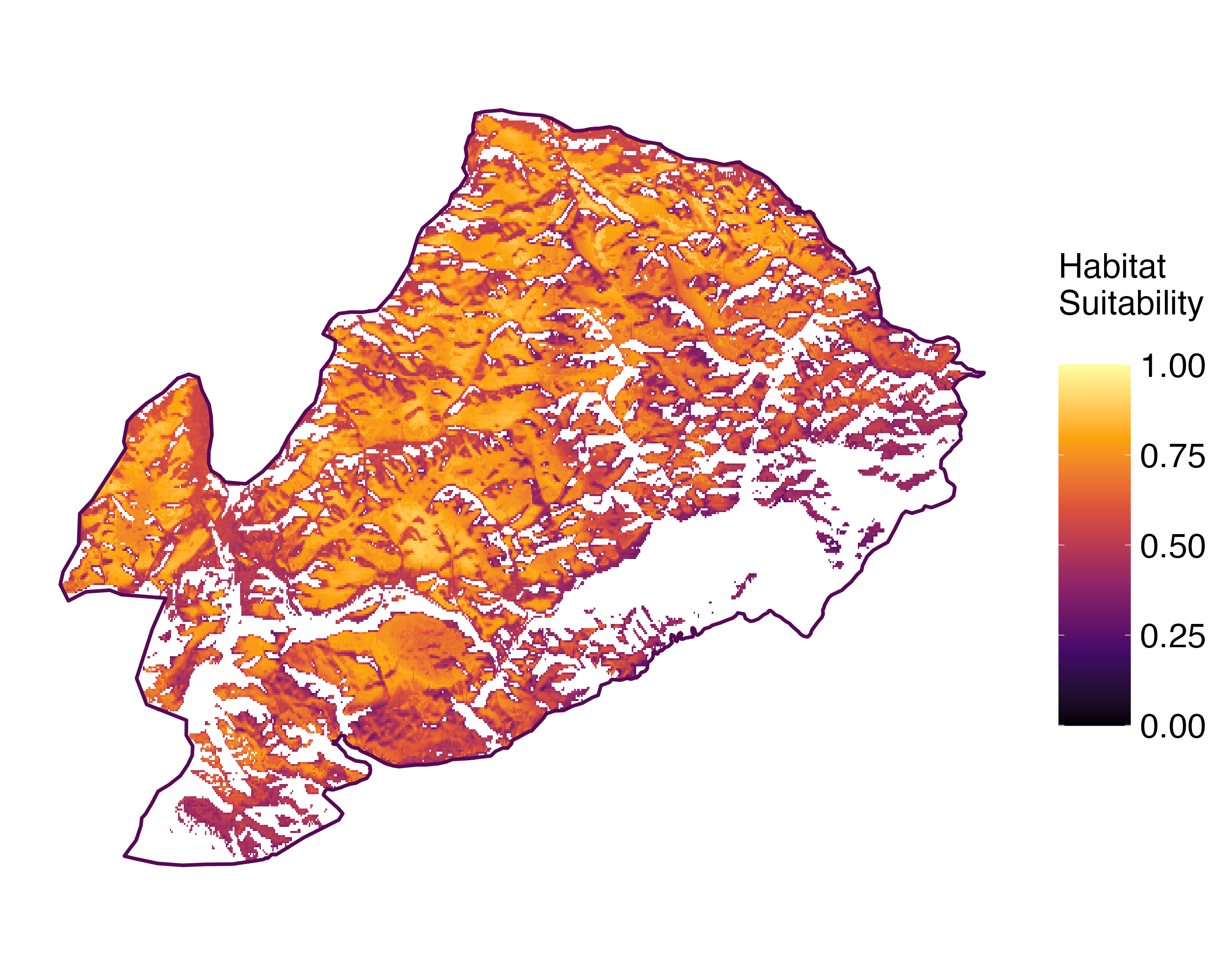Lecanora cadubriae (A. Massal.) Hedl.
Bih. K. Svenska Vetensk.-Akad. Handl., 18: 48, 1892. Basionym: Biatora cadubriae A. Massal. - Sched. Crit.: 176, 1856.
Synonyms: Biatora admixta Th. Fr.; Biatora aitema sensu A. Massal.; Lecanora nitida auct.?; Lecidea cadubriae (A. Massal.) Th. Fr.; Lecidea magnussoniana Hertel; Lecidea nitida Sommerf.; Lecidea subinsequens Nyl.
Description: Thallus crustose, episubstratic, granular to verrucose-areolate, rarely reduced to sparse granules surrounding the apothecia, yellowish white to yellowish grey, rarely delimited by a thin, whitish grey prothallus, the areoles thin, ecorticate, smooth. Apothecia clearly (pseudo-)lecanorine only when young, sessile, 0.2-0.8 mm across, with a pale reddish brown to blackish brown, flat to convex, often grey-pruinose disc, and a paler, thin but prominent, entire, epruinose, finally excluded thalline margin. Thalline exciple with very few algal cells, mostly located near the base; proper exciple colourless, lacking crystals; epithecium brown to olive-green, with pigment and coarse crystals dissolving in K; hymenium colourless, not inspersed with oil droplets; paraphyses rather coherent, capitate, the apical cells up to 4 µm thick; hypothecium colourless, not inspersed. Asci 8-spored, clavate to cylindrical-clavate, the apical dome K/I+ dark blue with a pale, conical-pointed apical cushion (axial mass), the wall I-, but the thin outer gel I+ blue, Bacidia-type. Ascospores 1-celled, hyaline, narrowly ellipsoid, 7-13 x 3-5 μm, the wall <1 µm thick. Pycnidia usually abundant, immersed, black. Conidia bacilliform, 3-6 x 1-1.5 µm. Photobiont chlorococcoid. Spot tests: thallus K+ yellow turning orange-red (red crystals), C-, KC-, P+ orange. Chemistry: norstictic acid (major), connorstictic acid (minor), and salazinic acid (major or absent); the chemotype with virensic acid was never found in Italy.
Growth form: Crustose
Substrata: bark
Photobiont: green algae other than Trentepohlia
Reproductive strategy: mainly sexual
Commonnes-rarity: (info)
Alpine belt: absent
Subalpine belt: rather rare
Montane belt: very rare
Dry submediterranean belt: absent
Humid submediterranean belt: absent
Padanian area: absent
pH of the substrata:
1 2 3 4 5
Solar irradiation:
1 2 3 4 5
Aridity:
1 2 3 4 5
Eutrophication:
1 2 3 4 5
Poleotolerance:
0 1 2 3
Altitudinal distribution:
1 2 3 4 5 6
Rarity
absent
extremely rare
very rare
rare
rather rare
rather common
common
very common
extremely common
Loading data...
Occurrence data
Predictive map
 Current prediction (1981-2010)
Current prediction (1981-2010) Future prediction (2071-2100) SSP 1-2.6
Future prediction (2071-2100) SSP 1-2.6 Future prediction (2071-2100) SSP 5-8.5Predictive maps according to Francesconi et al. 2025
Future prediction (2071-2100) SSP 5-8.5Predictive maps according to Francesconi et al. 2025
P.L. Nimis; Owner: Department of Life Sciences, University of Trieste
Herbarium: TSB (10513)
2001/11/25

P.L. Nimis; Owner: Department of Life Sciences, University of Trieste
Herbarium: TSB (8206)
2002/05/17
closely related to Lecanora cadubriae

Courtesy Danièle et Olivier Gonnet - Source: https://www.afl-lichenologie.fr/Photos_AFL/Photos_AFL_L/Texte_L_4/Lecanora_cadubriae.htm
France, Col de l'Echelle, 1780, Névache - Hautes-Alpes
31/5/2017

Courtesy Danièle et Olivier Gonnet - Source: https://www.afl-lichenologie.fr/Photos_AFL/Photos_AFL_L/Texte_L_4/Lecanora_cadubriae.htm
France, Col de l'Echelle, 1780, Névache - Hautes-Alpes
31/5/2017

Courtesy Danièle et Olivier Gonnet - Source: https://www.afl-lichenologie.fr/Photos_AFL/Photos_AFL_L/Texte_L_4/Lecanora_cadubriae.htm
France, Col de l'Echelle, 1780, Névache - Hautes-Alpes
31/5/2017

Courtesy Danièle et Olivier Gonnet - Source: https://www.afl-lichenologie.fr/Photos_AFL/Photos_AFL_L/Texte_L_4/Lecanora_cadubriae.htm
France, Col de l'Echelle, 1780, Névache - Hautes-Alpes
31/5/2017

Courtesy Danièle et Olivier Gonnet - Source: https://www.afl-lichenologie.fr/Photos_AFL/Photos_AFL_L/Texte_L_4/Lecanora_cadubriae.htm
France, Col de l'Echelle, 1780, Névache - Hautes-Alpes
31/5/2017

Courtesy Danièle et Olivier Gonnet - Source: https://www.afl-lichenologie.fr/Photos_AFL/Photos_AFL_L/Texte_L_4/Lecanora_cadubriae.htm
France, Col de l'Echelle, 1780, Névache - Hautes-Alpes
31/5/2017
Growth form: Crustose
Substrata: bark
Photobiont: green algae other than Trentepohlia
Reproductive strategy: mainly sexual
Commonnes-rarity: (info)
Alpine belt: absent
Subalpine belt: rather rare
Montane belt: very rare
Dry submediterranean belt: absent
Humid submediterranean belt: absent
Padanian area: absent
pH of the substrata:
| 1 | 2 | 3 | 4 | 5 |
Solar irradiation:
| 1 | 2 | 3 | 4 | 5 |
Aridity:
| 1 | 2 | 3 | 4 | 5 |
Eutrophication:
| 1 | 2 | 3 | 4 | 5 |
Poleotolerance:
| 0 | 1 | 2 | 3 |
Altitudinal distribution:
| 1 | 2 | 3 | 4 | 5 | 6 |
Rarity
absent
extremely rare
very rare
rare
rather rare
rather common
common
very common
extremely common
Loading data...
Occurrence data
Predictive map
 Current prediction (1981-2010)
Current prediction (1981-2010) Future prediction (2071-2100) SSP 1-2.6
Future prediction (2071-2100) SSP 1-2.6 Future prediction (2071-2100) SSP 5-8.5
Future prediction (2071-2100) SSP 5-8.5Predictive maps according to Francesconi et al. 2025

P.L. Nimis; Owner: Department of Life Sciences, University of Trieste
Herbarium: TSB (10513)
2001/11/25

P.L. Nimis; Owner: Department of Life Sciences, University of Trieste
Herbarium: TSB (8206)
2002/05/17
closely related to Lecanora cadubriae

Courtesy Danièle et Olivier Gonnet - Source: https://www.afl-lichenologie.fr/Photos_AFL/Photos_AFL_L/Texte_L_4/Lecanora_cadubriae.htm
France, Col de l'Echelle, 1780, Névache - Hautes-Alpes
31/5/2017

Courtesy Danièle et Olivier Gonnet - Source: https://www.afl-lichenologie.fr/Photos_AFL/Photos_AFL_L/Texte_L_4/Lecanora_cadubriae.htm
France, Col de l'Echelle, 1780, Névache - Hautes-Alpes
31/5/2017

Courtesy Danièle et Olivier Gonnet - Source: https://www.afl-lichenologie.fr/Photos_AFL/Photos_AFL_L/Texte_L_4/Lecanora_cadubriae.htm
France, Col de l'Echelle, 1780, Névache - Hautes-Alpes
31/5/2017

Courtesy Danièle et Olivier Gonnet - Source: https://www.afl-lichenologie.fr/Photos_AFL/Photos_AFL_L/Texte_L_4/Lecanora_cadubriae.htm
France, Col de l'Echelle, 1780, Névache - Hautes-Alpes
31/5/2017

Courtesy Danièle et Olivier Gonnet - Source: https://www.afl-lichenologie.fr/Photos_AFL/Photos_AFL_L/Texte_L_4/Lecanora_cadubriae.htm
France, Col de l'Echelle, 1780, Névache - Hautes-Alpes
31/5/2017













